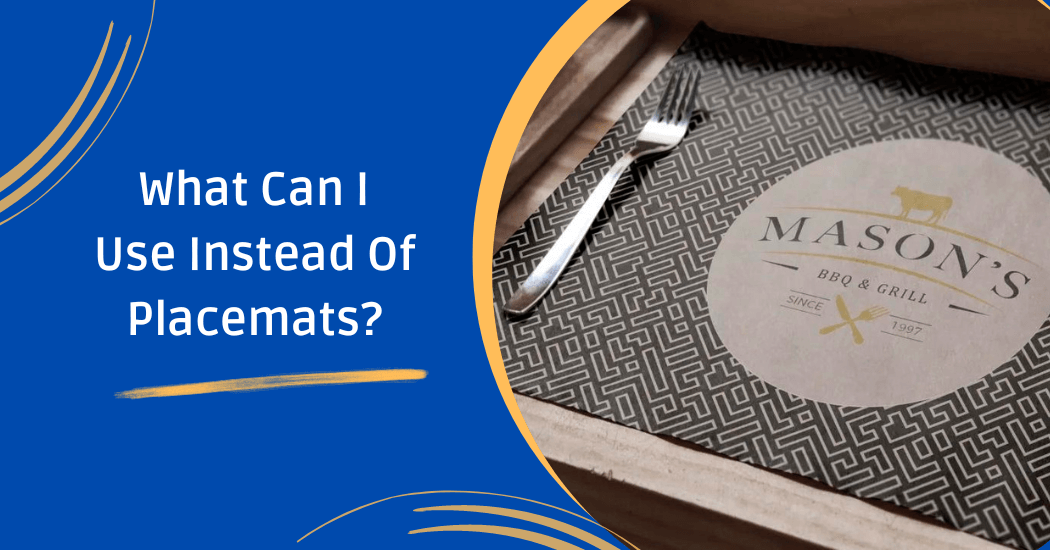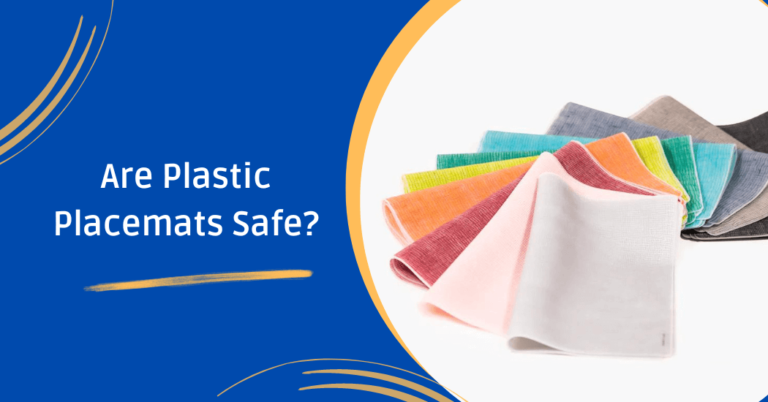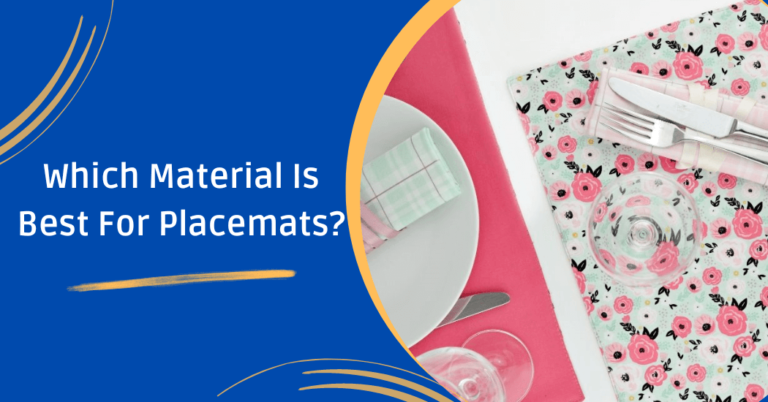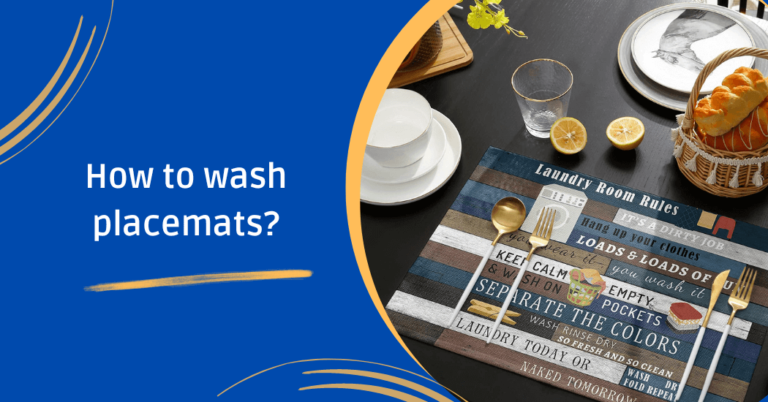What can I use instead of placemats?
Are you tired of using traditional placemats to protect your table and add a decorative touch to your dining experience? You’re not alone and there’s good news! There are plenty of innovative and stylish alternatives to placemats that can still enhance the aesthetic of your table setting.
This article will explore some fresh and exciting options to help you step up your table game without resorting to those old, predictable placemats. We’ll dive into various alternative solutions, ranging from eco-friendly materials to DIY projects that will impress your guests and give your dining area a completely new and refreshed look.
So gear up to discover these innovative placemat replacements and get ready to elevate your dining game to new heights!
What can I use instead of placemats?
| Option | Description | Style |
| Table runners | A long piece of fabric is used to cover the length of the table, often featuring vibrant colors and intricate designs to add a decorative touch. | Traditional & contemporary |
| Coasters | Small pieces of felt, wood or cork that are placed under glasses and other items to protect the table from moisture damage. | Modern & minimalistic |
| Tablecloths | A large piece of fabric draped over the entire length of the table offers an attractive look while also protecting the table surface. | Modern & minimalistic |
| DIY projects | Get creative and craft your own placemats using materials like fabric, paper or wood for a unique and personalized touch to your table setting. | Contemporary & custom-made |
| Natural materials | Use natural materials such as leaves, stones or branches to bring a rustic, eco-friendly vibe to your table. | Rustic & outdoor-inspired |
| Baskets/trays | Place baskets or trays with attractive items on the table, such as fresh flowers, scented candles or a set of cutlery – this will not only look great but also be practical. | Traditional & modern |
With a wide variety of options, you can easily find something that will work for your home and give your dining table a stylish update.
Whether you want a traditional look or something more modern, there is sure to be something that will complement your interior design style.
What kind of materials should I stay away from when choosing a placemat alternative?
When choosing alternatives to placemats, it’s essential to take note of certain materials that may not be suitable due to practical or aesthetic reasons:
- Easily Stained Fabrics: Light-colored or delicate fabrics that easily absorb liquids and stains should be avoided. They might require frequent cleaning or replacement, leading to unnecessary expenses.
- Sharp or Rough Objects: Materials that can potentially scratch or damage the surface of your table, such as certain types of stone, metal or wood, should be used with caution.
- Flammable Materials: Particularly if you often use candles as part of your table décor, avoid materials that easily catch fire, such as paper or certain types of fabric.
- Non-heat Resistant Materials: Certain types of plastic or synthetic materials might not withstand hot dishes or tableware, leading to melting or warping.
- Non-washable Materials: If it’s difficult to clean or maintain, it might not be the best choice for a table surface that needs to stay sanitary and presentable.
- Non-durable Materials: If it’s likely to tear, warp or discolor easily, it might not be a good fit for your placemat replacement. Look for something made of strong and long-lasting materials.
- Non-environmentally Friendly Materials: Many materials used in homes today are not eco-friendly or sustainable, so choosing materials with minimal environmental impact is important.
- Non-versatile Materials: Look for something that can be used in various settings, from casual dining to formal dinners. Versatility is key when choosing a placemat alternative.
- Poorly Made Items: If the item looks flimsy or has poor-quality construction, it might not be a good choice for your table. Look for something that is well-made and will last for years to come.
- Unattractive Items: Finally, it’s important to choose something that fits the overall aesthetic of your dining room or kitchen. If it doesn’t match the look you’re going for, it might be best to find another option.
What are some cost-effective and stylish placemat alternatives?
When it comes to finding a stylish and cost-effective placemat alternative, there are many options to choose from. Depending on your budget and style preference, you might consider:
- Reclaimed wood boards: These rustic boards can be upcycled from scrap wood or purchased from thrift shops for a fraction of the price of traditional placemats.
- Paper placemats: These can be found in a variety of colors and designs, making them both cost-effective and stylish.
- Fabric napkins: Use colorful cloth napkins to give your table settings an elegant look without breaking the bank.
- Corkboards: An unusual but eye-catching option that can be purchased or made from scrap cork pieces.
- Bamboo mats: A great eco-friendly option that is both sustainable and stylish.
- Recycled paper mats: An inexpensive way to add some color to your table while being kinder to the environment.
- Natural fibers: Scraps of felt, jute or linen can be upcycled to make colorful placemats.
- Beaded mats: For a more luxurious look, try making unique mats with wooden and glass beads.
- Vinyl mats: Not only are these cost-effective but they’re also easy to clean and come in a variety of colors and patterns.
- Woven mats: A beautiful option that adds texture and interest to your table.
No matter what you decide, there are plenty of creative and stylish options for creating cost-effective placemats. Have fun experimenting and don’t be afraid to try something new!
You never know, you might just end up with an eye-catching addition to your dining room décor. Plus, it’s always nice to save a bit of money while still making a statement.
Final Thoughts
There’s a wide array of alternatives to traditional placemats that are not only cost-effective but can also add a unique touch to your table setting. Whether you prefer the rustic charm of wood, the vibrant versatility of plastic or the eco-friendliness of bamboo and recycled paper, there’s an option to suit every taste and budget.
By exploring these unconventional materials, you can create a dining experience that is uniquely your own, while also making a statement about your commitment to sustainability and affordability.
So go ahead, be bold and experiment with these alternatives Your dining table will be all the more appealing for it.








